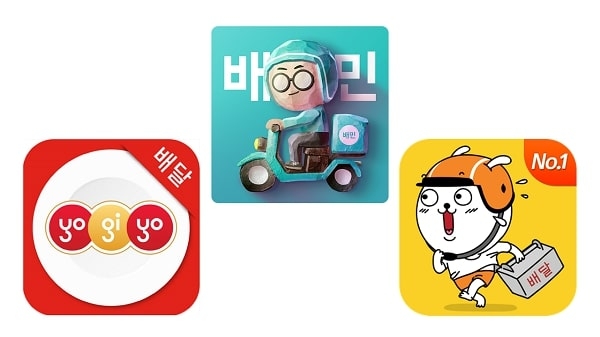
Korea boasts one of the fastest and most convenient delivery services in the world. Ordering some midnight snacks after 11 P.M. in Korea is nothing new. However in countries like France, delivery after 11 P.M. is impossible. Also, free delivery and coupons are unique aspects of our delivery culture. Such convenient and user-friendly delivery services have become even more convenient and easy to use with the appearance of delivery apps. Delivery apps allow users to order food without calling and provides various benefits as well and, with the advance of IT and smartphones in our daily lives, delivery apps have been rooted deeply into our lives.
Before such advances, delivery couriers were employed by the restaurant themselves. But now, several couriers are hired in the form of freelancers, paid for each delivery operate under one agency. When orders come in from the consumers, restaurants send the orders to the agency, who then sends a courier to pick up the food and deliver.
According to a research from Nielsen Korea, the monthly number of delivery application users in 2018 was 3.66 million. It is safe to say that, now in 2019, the number is bigger and growing. Other than the app, ‘Baemin’ holding more than 56 percent of the delivery market share, ‘Baedaltong’ and ‘Yogiyo’ each holding nearly 11 and 33 percent are the “Big Three” accounting for almost all 100 percent of the delivery app industry. Statistically, one in two Koreans have one of the three apps installed in their phones.
In spite of providing comfort, small business owners are worried about their influence expanding so rapidly. For small businesses the brokerage fees and advertisement costs are burdensome. Up to 15 to 16 percent of sales are charged by the app company that intermediates deliveries between restaurants and consumers. There are also controversies on them demanding brokerage commissions three times higher than those required of large franchises.
Another notable problem is the ‘bid-style advertisement’. Restaurants offer the highest amount of money once a month through auctions by region, and categories were advertised in the case of ‘Baemin’ in the so called ‘Superlist’. Only the top three restaurants were showcased to the consumers. It caused excessive competition, causing a sharp rise in advertisement costs adding even more pressure to merchants.
For areas where delivery apps are highly utilized, the monthly advertising fee for a superlist approximated nearly 100 million KRW. From April of this year, the ‘Superlist’ was removed and replaced with a fixed rate system. But out of the “Big Three” only ‘Baemin’ has taken up the fixed rate system. ‘Yogiyo’ and ‘Baedaltong’ are still sticking to the bid-style ads.
Despite all the problems and burdens, merchants and restaurants are partnering with delivery apps because of the reality that the main mean of ordering delivery foods has moved from telephone to mobile apps. With more people, especially the millennials and the younger generations, preferring non-face-to-face transactions, even with some severe shortcomings, the market for app-based food delivery is expected to grow further.
In the current situation, it is not easy for restaurants to go away from delivery apps. Realistically speaking, they have to follow the request of the app-platform operators, the “Big Three”. Company fees increasing while more consumers using one of the “Big Three” apps, conflicts between the restaurants and the app companies seems inevitable.


